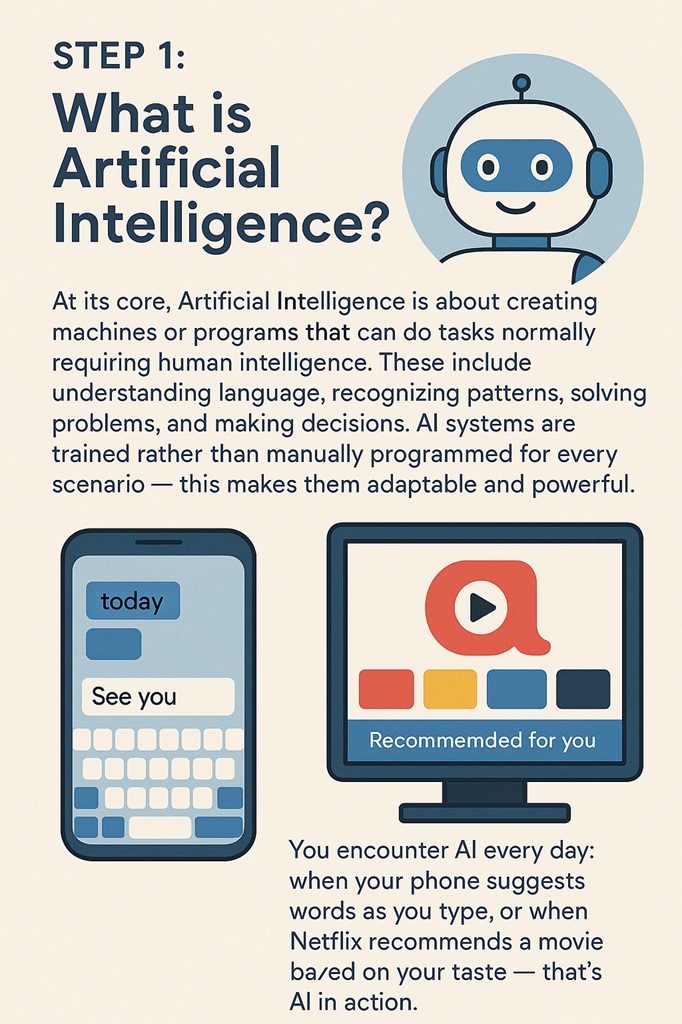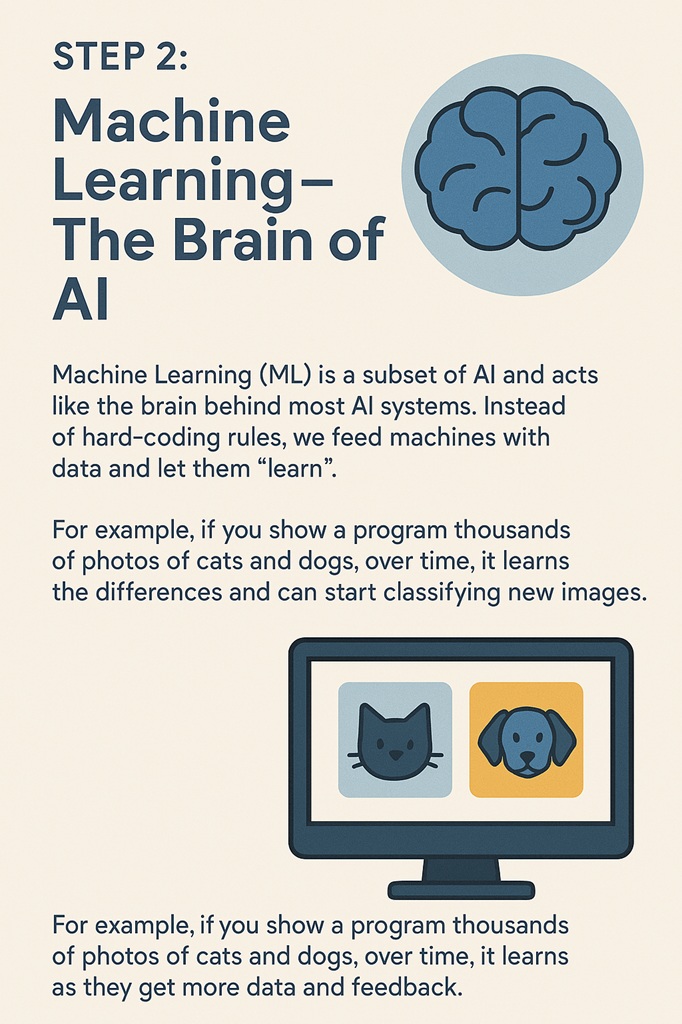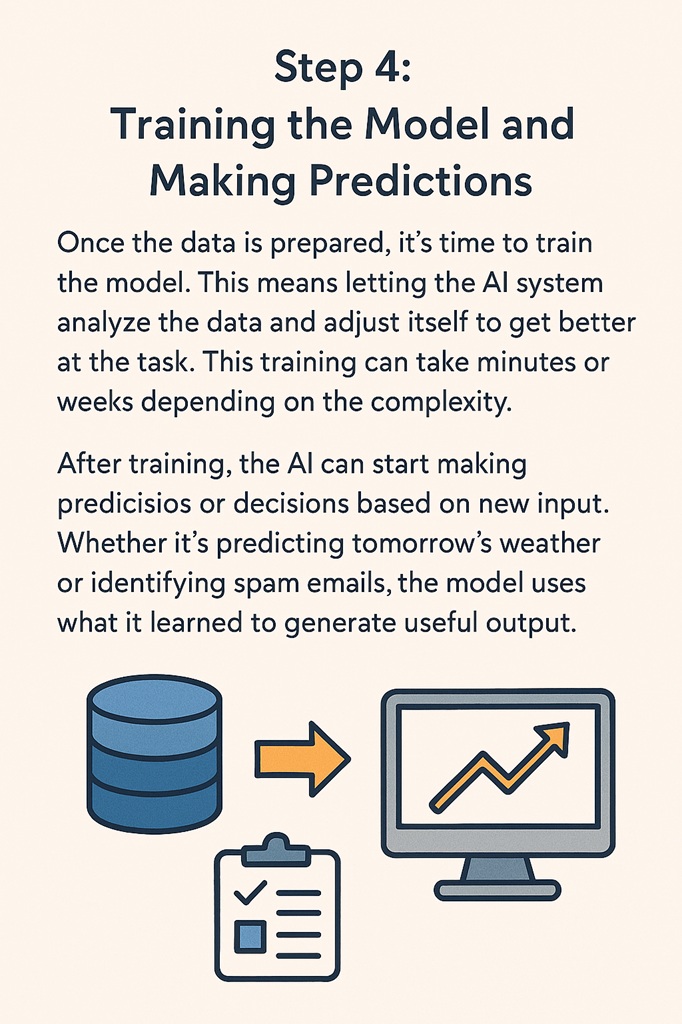What is Artificial Intelligence?
Artificial Intelligence, or AI, might sound like something out of a sci-fi movie, but it’s based on straightforward ideas. At its essence, AI is about creating machines or software that can perform tasks that typically require human intelligence. These tasks include understanding language, recognizing patterns, solving problems, and making decisions. Unlike traditional programming, AI systems are trained to adapt to various scenarios, making them incredibly versatile and powerful.
You probably encounter AI more often than you realize. For instance, when your smartphone suggests words as you type or when Netflix recommends a movie based on your viewing history, that’s AI at work.

Machine Learning: The Brain Behind AI
Machine Learning (ML) is a crucial component of AI, acting as the brain behind most AI systems. Instead of programming machines with specific rules, we provide them with data and allow them to “learn” from it.
Consider this example: if you show a program thousands of photos of cats and dogs, it will eventually learn to distinguish between the two and classify new images accurately. Machine learning models improve as they receive more data and feedback, becoming more precise over time.

Data Collection and Preparation
The success of any AI project hinges on the quality of the data it uses. AI systems learn from examples, so they require a large amount of high-quality, well-labeled information for training.
Data collection involves gathering relevant text, images, audio, or sensor readings. Once collected, this data often needs to be cleaned, removing errors and organizing it so that machines can interpret it effectively. Think of it like teaching a student: if you provide them with messy, incorrect information, they’ll struggle to learn anything useful.

Training the Model and Making Predictions
After preparing the data, the next step is to train the model. This involves allowing the AI system to analyze the data and adjust itself to improve its performance on the task at hand. Depending on the complexity, this training process can take anywhere from minutes to weeks.
Once trained, the AI can start making predictions or decisions based on new inputs. Whether it’s forecasting tomorrow’s weather or identifying spam emails, the model uses what it has learned to generate useful outputs.

Final Thoughts
AI isn’t magic, it’s a combination of math, logic, and a lot of data working together. By understanding these four simple steps, you’re well on your way to grasping how AI systems are built and utilized in the real world. With this knowledge, you can better appreciate the technology that increasingly shapes our daily lives.

